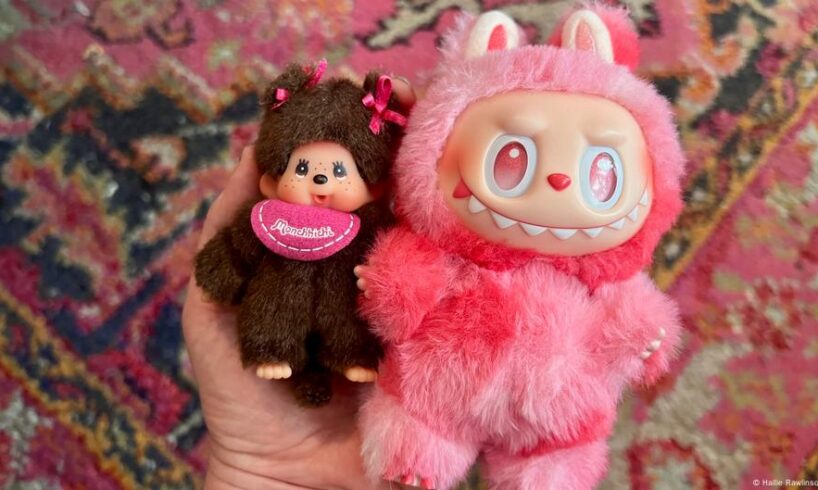
Berlin’s new Pop Mart store, the first in Germany, drew massive crowds during its opening weekend. The mania was fueled by celebrity Labubu collectors such as Blackpink’s Lisa, Rihanna, Dua Lipa and David Beckham.
Hot on the heels of the viral Labubu craze, influencers have also been hyping another collectible furry toy that could be seen as the “ancestor” of the plush creepy-cute monster: The Monchhichi.
Popular worldwide in the 1980s, the plastic-faced monkey doll was created by Japanese designer Yoshiharu Washino for the Sekiguchi Corporation.
Labubu toys set out to take Germany by storm
To view this video please enable JavaScript, and consider upgrading to a web browser that supports HTML5 video
Released in 1974, the doll’s first exposure to the international market came a year later at the Nuremberg Toy Fair, allowing the Japanese company to launch the toys in German-speaking countries.
They were a huge success in Europe. By the late 1970s, more Monchhichi dolls were sold in Germany than in Japan.
Global fame followed when US toy company Mattel started marketing the fluffy dolls in 1980. A cartoon series called “Monchhichis,” produced by Hanna-Barbera, was released worldwide to promote them. But five years later, Mattel felt the sales weren’t strong enough, and dropped the line.
Still, the Monchhichis were relaunched in the US in 2004 to mark the 30th anniversary of the toy.
With the dolls now sold in stores like Urban Outfitters, Monchhichi marketers are no longer targeting children, but rather young adults drawn to quirky-nostalgic trends.
Monchhichi dolls are still popular todayImage: Revierfoto/dpa/picture alliance
Spot the fake
Labubu collectors who search for rare models online need to figure out if they are about to buy an authentic toy monster elf, created by Hong Kong-Dutch designer Kasing Lung, or rather a fake “Lafufu” — as the counterfeit dolls are colloquially referred to.
The internet is filled with tips allowing fans to spot the differences between the two. The copycats are obviously less refined than the designer models. Kids are being teased by their friends if they show up with a figure that has 10 or eight teeth instead of nine — the ultimate sign that it’s not the real thing.
Similarly, copies of the Monchhichi can be found all over the world.
But the version of the doll sold in former East Germany,or the German Democratic Republic (GDR), bypassed the authenticity issue by taking on a different name: the Tiemi.
The Tiemi was the East German version of the MonchhichiImage: Privat
Monchhichi behind the Iron Curtain
While the Monchhichi’s popularity boomed in West Germany, it was not available in the communist East, which banned the import and the sale of capitalist consumer items.
The Tiemi, whose namesak was toy designer Susanne Tieme, was produced in the small town of Sonneberg that was already a toy-producing hub at the beginning of 20th century.
When Sonneberg landed in the Soviet-controlled eastern part of Germany after World War II, the region’s numerous family businesses were nationalized into so-called people-owned enterprises.
One such state business in Sonnerberg manufactured the Tiemi, which became very popular and was exported throughout Eastern Bloc countries.
But following German reunifcation in 1990, the plant was sold and privatized and production ceased
Today, plush figures made in Sonneberg have become collectors’ items. An internet search for “Sonni DDR” toys leads to a wide variety of dolls that some might find even creepier than Labubus.
Edited by: Stuart Braun





